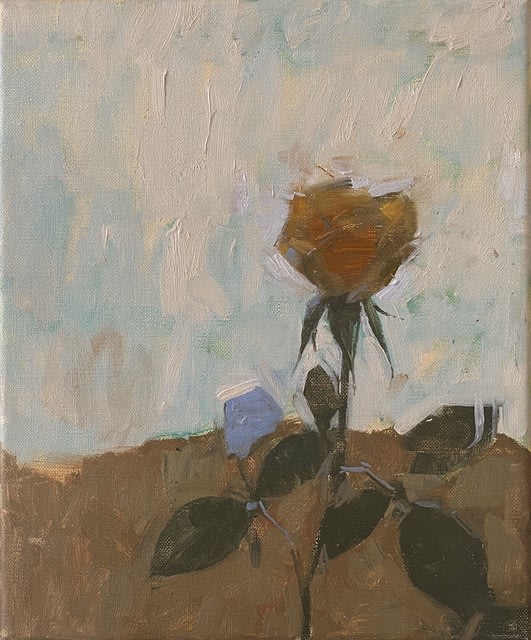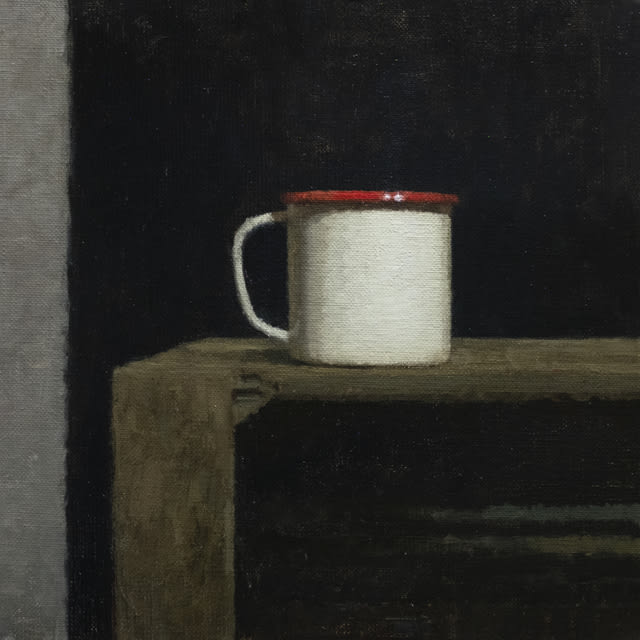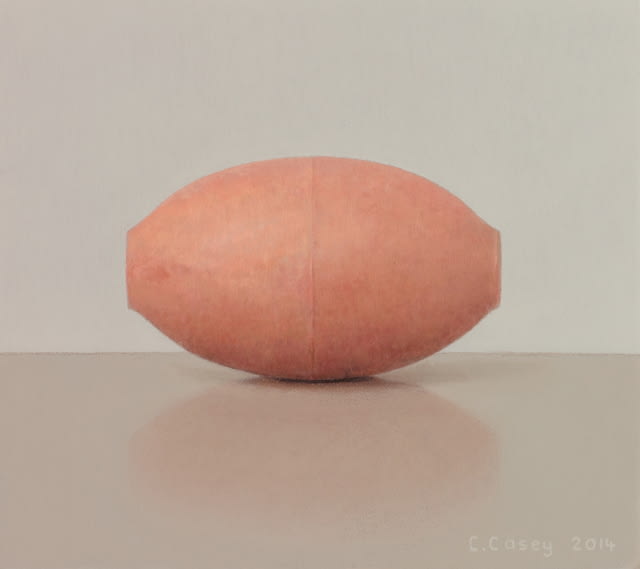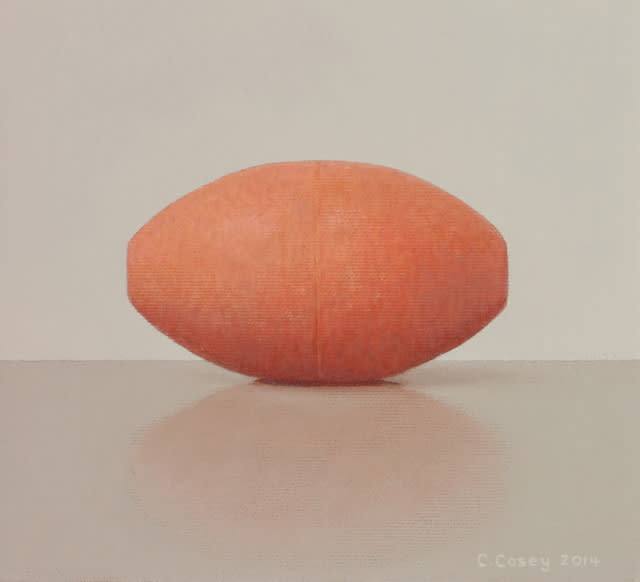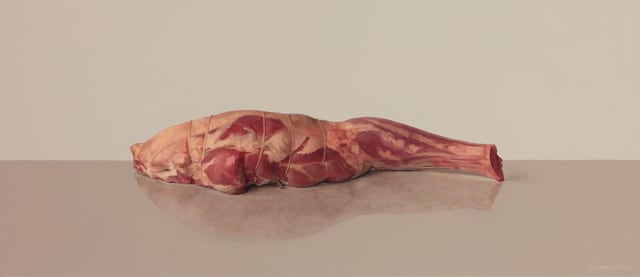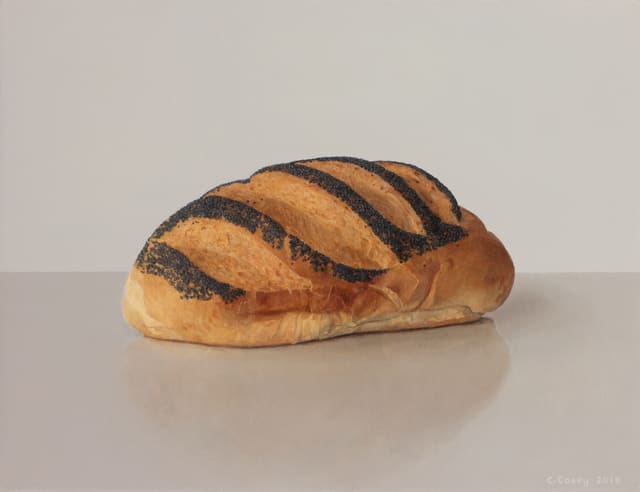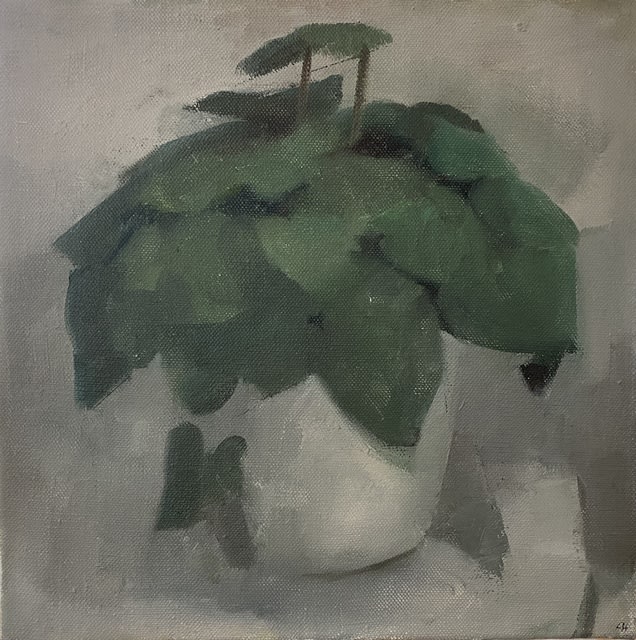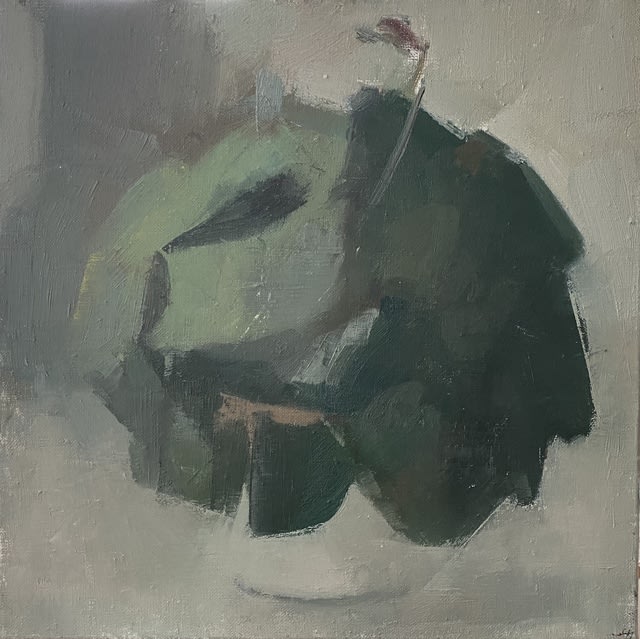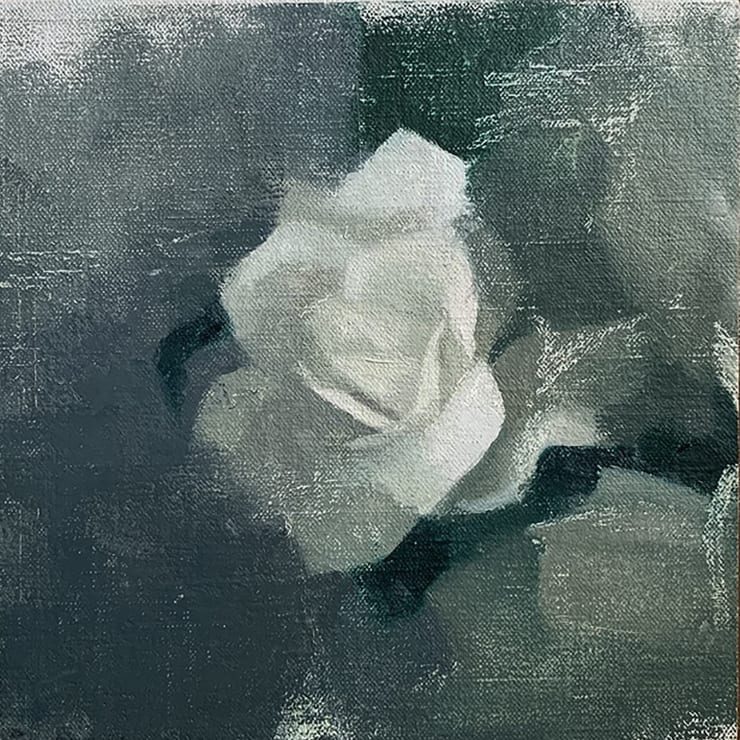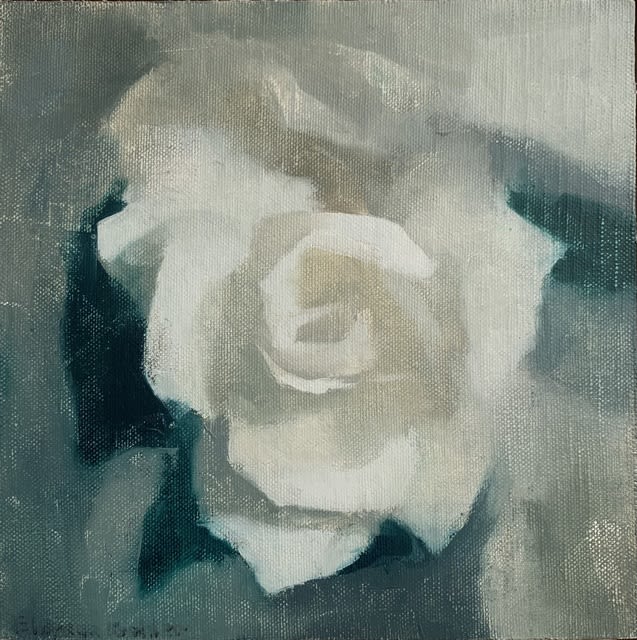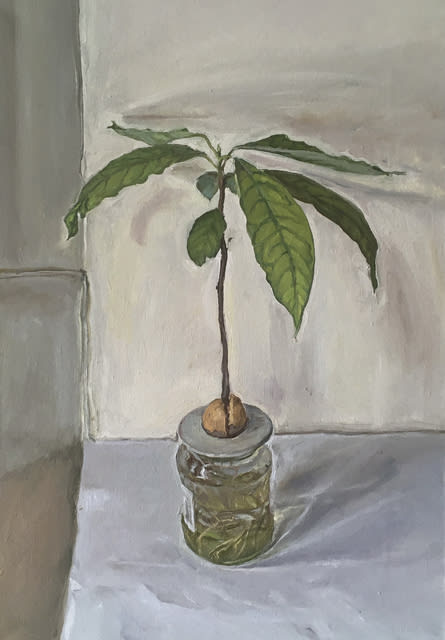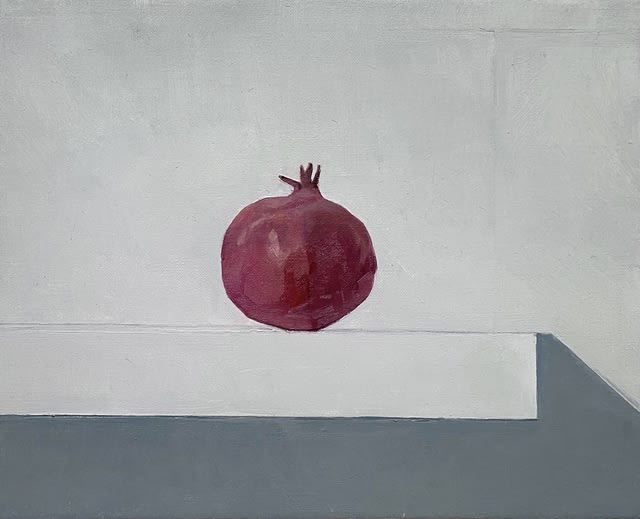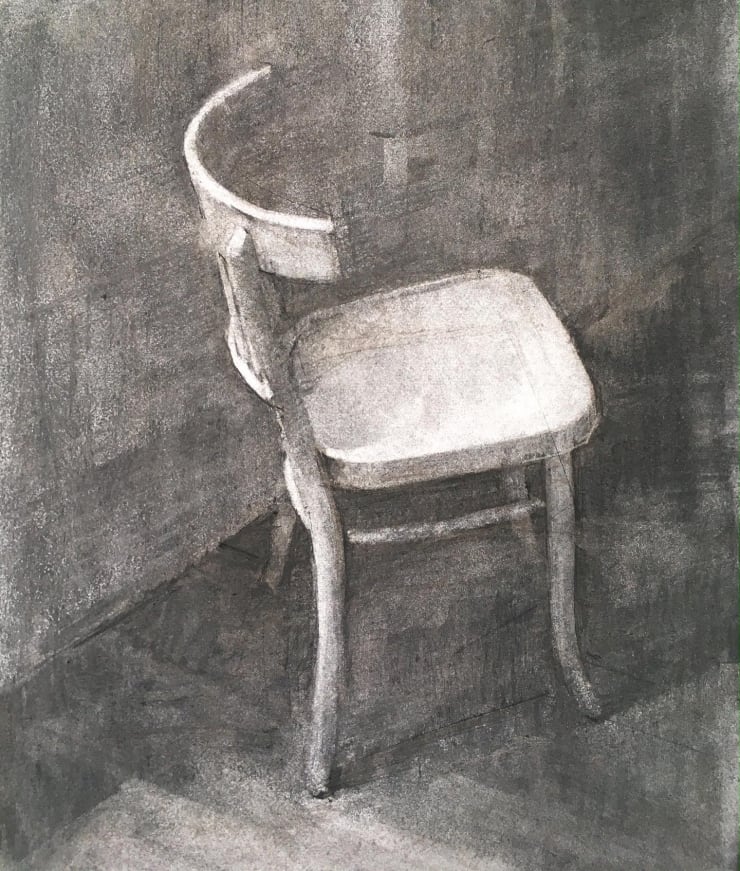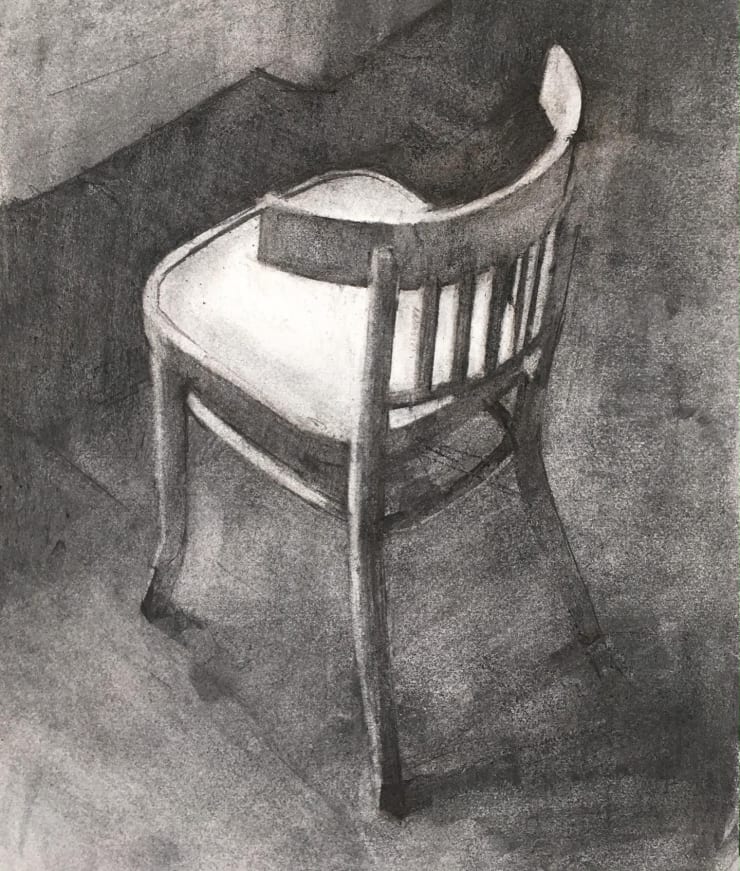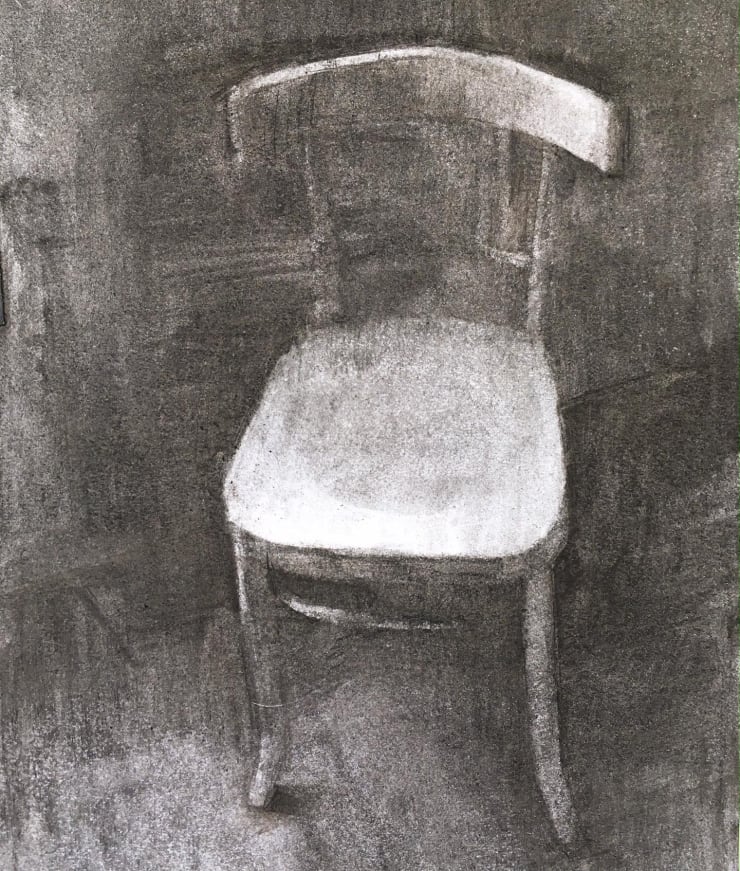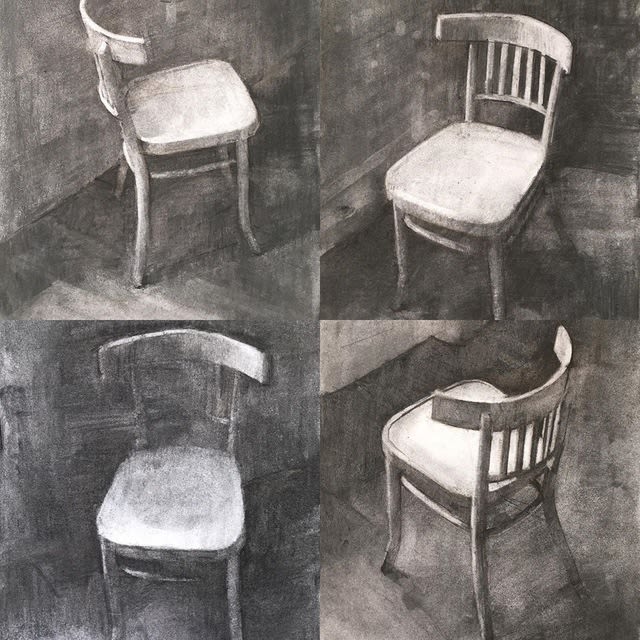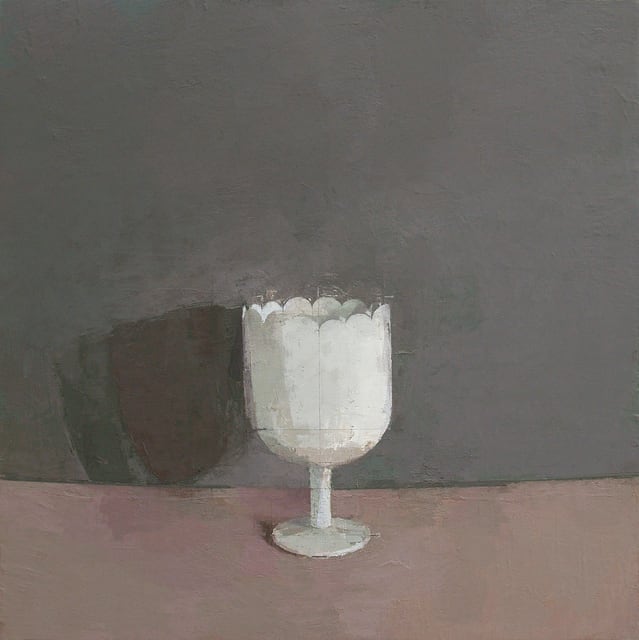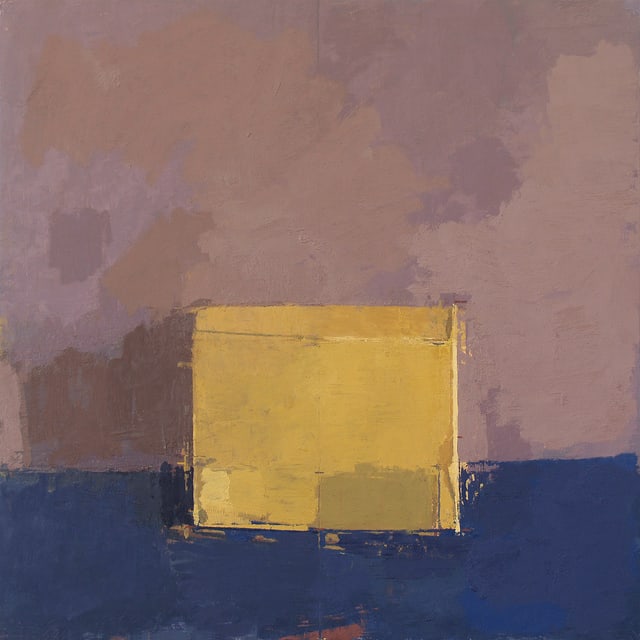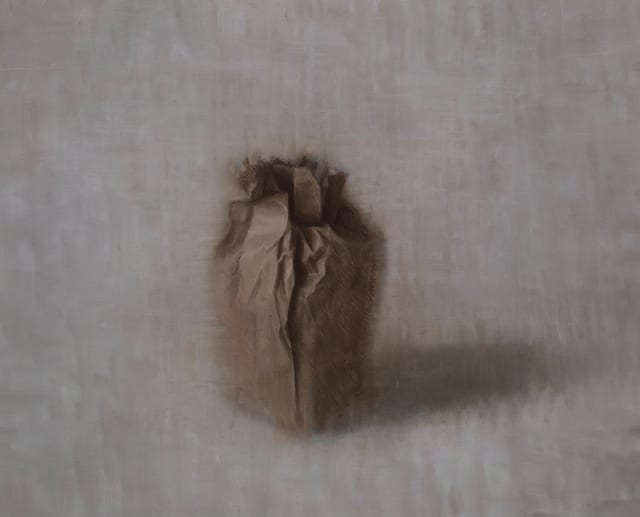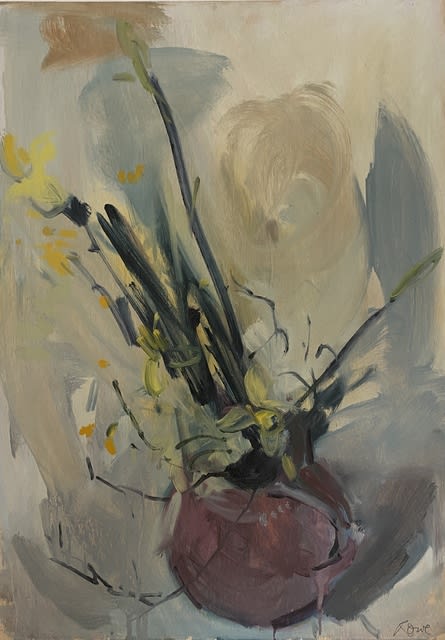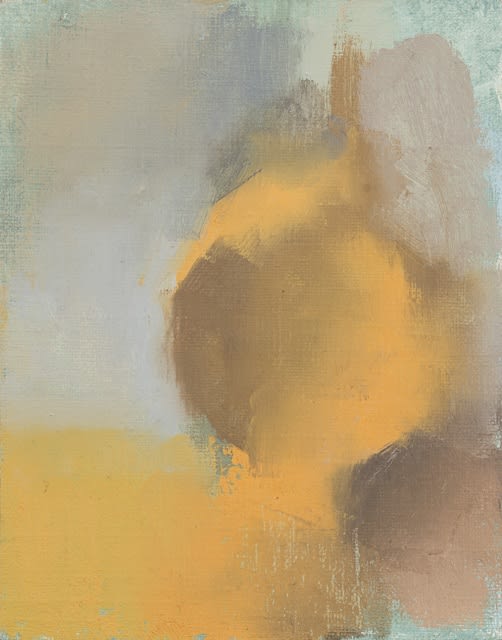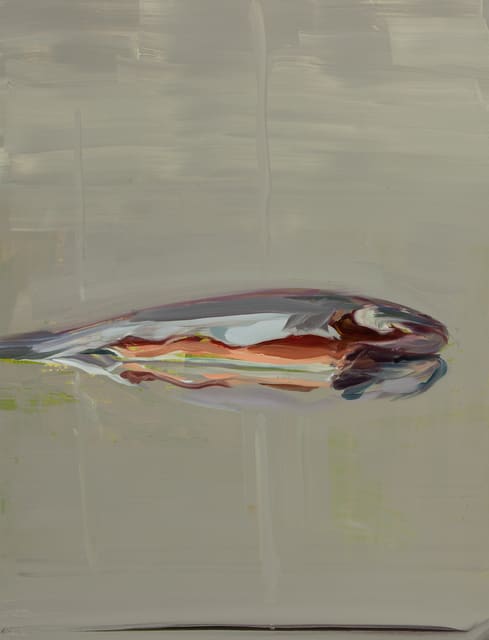One: Paintings of Single Objects
"Painted with passion, a single object surrounded by space can have more power than the most elaborate composition. It can have a hypnotic effect on anyone looking at it. Because of the way it triggers the imagination. With less to absorb, viewers will project their feelings and experiences onto the art and connect with it in a deeply personal way" Christopher Gallego, Artist
The act of looking begins with the artist. Looking at the world around them, noticing small detail, seeing beauty in the seemingly insignificant, the painterly possibilities offered by an ordinary object such as a cardboard box or plastic cup.
What is it about certain lone objects that catch an artist's eye and entice them into further investigation? A mass produced product, organic matter or handcrafted article. Flowers or fruit, laden with their own art historical significance, timeless subjects that give little away or cheaply produced ornaments celebrating the preoccupations of their time. Perhaps the artist is attracted by a metaphorical or sentimental quality, the evocation of a memory or suggestion of a narrative, it could be formal properties, a colour or a shape that sets off an idea for a painting. Simplified to a single subject in a square or rectangle, the object's lack of context can allow the artist to contemplate its presence, elevate its status or celebrate its mundanity. An everyday object freed of its context and placed on a plinth, measured, observed, abstracted, scrutinised, immortalised.
For the artist, the concerns might be of space, form and experience. Attention paid to shape, colour relationships, proportions, measurements, a painting about the act of painting. Once the object is detached from its function, what is the artist left with? The beautiful shape of a shadow created in the folds of a paper bag, the muted tones of a plastic funnel or shifting light across the composition. The subject loses itself in the painting. The surface becomes important, the paint on canvas, the passage of time.
The artist may amplify the object, through the slow, painstaking recording of details or the distortion of scale or colour. The neutrality or ambiguity of its background can create a quiet tension and looming sense of presence. An object standing alone, stripped of context and inviting scrutiny.
It is an intimate experience, between the artist and the object, realised through the act of painting. Some artists will record the changing conditions of light and form, others will work quickly to capture the moment before it is gone or find ways to preserve the stillness of an organic object to avoid its inevitable decay. They may move away from the subject and respond to the needs of the painting, whilst others will remain true to the object and act of observation to the end.
And what of the viewer? How do we respond to this new object, created by the artist and hanging in the gallery? The mundanity of the subject can allow us to see beyond the object depicted and apprehend the actual painting. With the absence of a clear narrative, we can bring our own story, look at the paint on the canvas, remember again that we are looking at a painting. Perhaps it brings us closer to the artist, the lone object allowing the same intimacy felt when observing a self-portrait. We witness the artist at work, paint brush in hand to record the small details or layers of paint added and removed, documenting the objects presence in a particular time and space. And do we trust the artist? Do we believe in the authenticity of the object, did it ever exist?
-
 James Bland, Coffee Cup, 2021
James Bland, Coffee Cup, 2021 -
 James BlandTiny Crimson Roses, 2020Oil on canvas20 x 20 cmSold
James BlandTiny Crimson Roses, 2020Oil on canvas20 x 20 cmSold -
 James BlandLast Yellow Rose, 2019Oil on canvas30 x 25 cmSold
James BlandLast Yellow Rose, 2019Oil on canvas30 x 25 cmSold -
 Will CalverEnamel Cup III, 2021Oil on linen25.5 x 25.5 cmSold
Will CalverEnamel Cup III, 2021Oil on linen25.5 x 25.5 cmSold -
 Will CalverMission Fig, 2021Oil on linen25.5 x 25.5 cmSold
Will CalverMission Fig, 2021Oil on linen25.5 x 25.5 cmSold -
 Comhghall CaseyFloat 1, 2014Oil on canvas18 x 20 cm
Comhghall CaseyFloat 1, 2014Oil on canvas18 x 20 cm -
 Comhghall CaseyFloat 2, 2014Oil on canvas18 x 20 cm
Comhghall CaseyFloat 2, 2014Oil on canvas18 x 20 cm -
 Comhghall CaseyFloat 3, 2014Oil on canvas18 x 20 cm
Comhghall CaseyFloat 3, 2014Oil on canvas18 x 20 cm -
 Comhghall Casey, Shoulder of Lamb, 2016
Comhghall Casey, Shoulder of Lamb, 2016 -
 Comhghall Casey, Small Vienna (Poppy Seed), 2018
Comhghall Casey, Small Vienna (Poppy Seed), 2018 -
 Clare Haward, Cyclamen I, 2020
Clare Haward, Cyclamen I, 2020 -
 Clare Haward, Cyclamen II, 2020
Clare Haward, Cyclamen II, 2020 -
 Clare Haward , Cyclamen III, 2020
Clare Haward , Cyclamen III, 2020 -
 Clare Haward , Cyclamen IV, 2020
Clare Haward , Cyclamen IV, 2020 -
 Clare Haward , Cyclamen V, 2020
Clare Haward , Cyclamen V, 2020 -
 Elisabeth Larson-KoehlerA White Rose, 2017Oil on canvas mounted on board20 x 20 cm
Elisabeth Larson-KoehlerA White Rose, 2017Oil on canvas mounted on board20 x 20 cm -
 Elisabeth Larson-KoehlerGarden Roses, 2018Oil on canvas mounted on board20 x 25 cmSold
Elisabeth Larson-KoehlerGarden Roses, 2018Oil on canvas mounted on board20 x 25 cmSold -
 Elisabeth Larson-KoehlerRose, 2017Oil on canvas mounted on board20 x 20 cmSold
Elisabeth Larson-KoehlerRose, 2017Oil on canvas mounted on board20 x 20 cmSold -
 Elisabeth Larson-KoehlerRose in Water, 2017Oil on canvas mounted on board20 x 20 cm
Elisabeth Larson-KoehlerRose in Water, 2017Oil on canvas mounted on board20 x 20 cm -
 James LloydAvocado Plant, 2020Oil on canvas50.5 x 35.5 cm
James LloydAvocado Plant, 2020Oil on canvas50.5 x 35.5 cm -
 James LloydHello Kitty, 2012Oil on canvas45 x 35 cmSold
James LloydHello Kitty, 2012Oil on canvas45 x 35 cmSold -
 James LloydFunnel, 2020Oil on canvas20 x 25 cmSold
James LloydFunnel, 2020Oil on canvas20 x 25 cmSold -
 Jason LineLemon Diptych, 2017Oil on canvas laid on panel20 x 35 cmSold
Jason LineLemon Diptych, 2017Oil on canvas laid on panel20 x 35 cmSold -
 Jason LineSomething Blue, 2018Oil on linen25.5 x 30.5 cmSold
Jason LineSomething Blue, 2018Oil on linen25.5 x 30.5 cmSold -
 Jason LinePomegranate, 2020Oil on linen20.5 x 25.5 cmSold
Jason LinePomegranate, 2020Oil on linen20.5 x 25.5 cmSold -
 Jason LineLemon with Leaf 2, 2020Oil on linen laid on panel20.5 x 25.5 cmSold
Jason LineLemon with Leaf 2, 2020Oil on linen laid on panel20.5 x 25.5 cmSold -
 Jason LineLloyd Loom Chair , 2021Oil on linen35 x 30 cm
Jason LineLloyd Loom Chair , 2021Oil on linen35 x 30 cm -
 Jason Line, Chair 1, 2019
Jason Line, Chair 1, 2019 -
 Jason Line, Chair 2, 2019
Jason Line, Chair 2, 2019 -
 Jason Line, Chair 3, 2019
Jason Line, Chair 3, 2019 -
 Jason Line, Chair 4, 2019
Jason Line, Chair 4, 2019 -
 Jason LineChair Quartet, 2019Charcoal on paper42 x 29 cmSold
Jason LineChair Quartet, 2019Charcoal on paper42 x 29 cmSold -
 Joe MorzuchWhite Bowl, 2020Oil on linen43.5 x 43.5 x 4 cmSold
Joe MorzuchWhite Bowl, 2020Oil on linen43.5 x 43.5 x 4 cmSold -
 Joe MorzuchEgg Carton, 2020Oil on linen43.5 x 43.5 x 4 cmSold
Joe MorzuchEgg Carton, 2020Oil on linen43.5 x 43.5 x 4 cmSold -
 Joe MorzuchCompote, 2020Oil on linen43.5 x 43.5 x 4 cmSold
Joe MorzuchCompote, 2020Oil on linen43.5 x 43.5 x 4 cmSold -
 Joe MorzuchGreen Box, 2020Oil on linen43.5 x 43.5 x 4 cmSold
Joe MorzuchGreen Box, 2020Oil on linen43.5 x 43.5 x 4 cmSold -
 Joe MorzuchYellow Box, 2020Oil on linen43.5 x 43.5 x 4 cmSold
Joe MorzuchYellow Box, 2020Oil on linen43.5 x 43.5 x 4 cmSold -
 Martin RedmondProfile, 2021Oil on paper mounted on board30 x 30 cm
Martin RedmondProfile, 2021Oil on paper mounted on board30 x 30 cm -
 Martin RedmondPaperbox, 2021Oil on paper mounted on board35 x 24 cm
Martin RedmondPaperbox, 2021Oil on paper mounted on board35 x 24 cm -
 Martin RedmondEmbrace, 2021Oil on canvas30 x 30 cm
Martin RedmondEmbrace, 2021Oil on canvas30 x 30 cm -
 Martin RedmondCarrier, 2021Oil on paper mounted on board28 x 35 cm
Martin RedmondCarrier, 2021Oil on paper mounted on board28 x 35 cm -
 Serena RoweReaching, 2021Oil on board59 x 41.5 cmSold
Serena RoweReaching, 2021Oil on board59 x 41.5 cmSold -
 Serena RoweFirst Tulips of the Year, 2021Oil on board60.5 x 45.5 cmSold
Serena RoweFirst Tulips of the Year, 2021Oil on board60.5 x 45.5 cmSold -
 Mika SalamonUntitled 3, 2020Oil on wood60 x 80 cm
Mika SalamonUntitled 3, 2020Oil on wood60 x 80 cm -
 Mika SalamonUntitled 1, 2019Oil on linen mounted on wood22.5 x 21 cm
Mika SalamonUntitled 1, 2019Oil on linen mounted on wood22.5 x 21 cm -
 Mika SalamonUntitled 2, 2019Oil on linen mounted on wood17 x 13 cmSold
Mika SalamonUntitled 2, 2019Oil on linen mounted on wood17 x 13 cmSold -
 Laura SmithFish III, 2015Oil on aluminium65 x 50 cmSold
Laura SmithFish III, 2015Oil on aluminium65 x 50 cmSold -
 Laura SmithKnife Upturned, 2012Oil on aluminium21.5 x 27 cmSold
Laura SmithKnife Upturned, 2012Oil on aluminium21.5 x 27 cmSold



